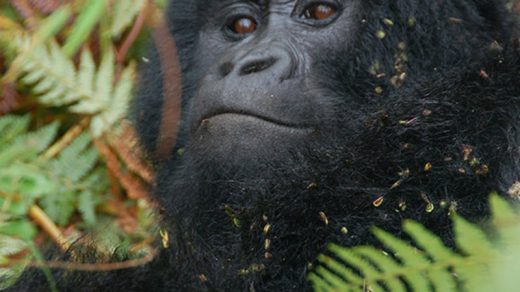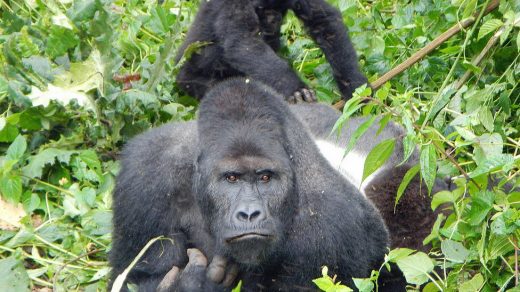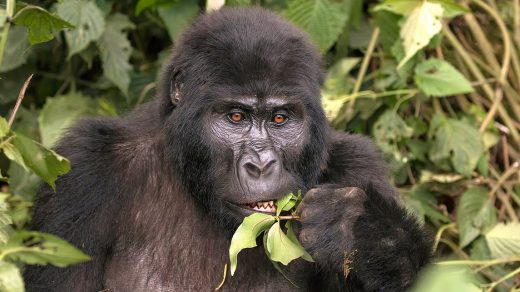One of the projects aiming to save the western lowland gorillas from extinction is the Sangha Tri-National (STN) Protected Area Complex, a trans-border initiative covering 36,000 square kilometres of protected areas:
-
The Dzanga Sangha Protected Area complex in the Central African Republic
-
The Nouabale-Ndoki National Park in the Republic of Congo
-
The Lobeke National Park in Cameroon
The complex was declared a UNESCO World Heritage Site in 2012.
The initiative is supported by the World Bank/WWF alliance, WCS, GTZ, CARPE (USAID) and the French Cooperation. Among other things, the initiative is promoting the development of sustainable eco-tourism in the Dzanga Sangha Protected Area complex, and is currently supporting a gorilla tracking program.
To protect the gorillas from ebola, the initiative is supporting ongoing research that aims to adapt the human Ebola vaccine for use on gorillas.
Another leg of the initiative is working on strengthening the safekeeping of the Nouabale-Ndoki National Park, as ongoing war and civil unrest in the Republic of Congo have made it difficult to enforce park rules, e.g. the work against poaching.
The Dzanga Sangha Protected Area (DSPA) complex in the Central African Republic
DSPA was created in 1990 and is located in the far south-western part of the Central African Republic (CAF), by the northern edge of the Congo Basin forest. It is the largest intact forest in CAF. DSPA includes both the Dzanga-Ndoki National Park and the Dzanga-Sangha Dense Forest Special Reserve. DSPA is a high priority area for the WWF Africa Great Apes programme.
The Dzanga-Ndoki National Park consists of two sectors: the Dzanga sector in the north and the Ndoki sector in the south. The Dzanga sector is famous for having on of the world´s highest densities of western lowland gorillas. At the most recent survey, there was 1 gorilla per 1.6 sq km of land here.
Three different forest types are represented within the park:
-
Mainly dryland forest, with mixed open-canopy
-
Semi-evergreen forest, with swamp-forest areas along the rivers
-
Closed-canopy forest, dominated by Gilbertiodendron dewevrei
The Nouabalé-Ndoki National Park
The Nouabalé-Ndoki National Park is located in the northern province of the Republic of Congo, and includes tropical rainforest without human habitations. This national park was established in 1993 and is home to both western lowland gorillas and the eastern sub-species of chimpanzee. Roughly one thousand plant species have been reported from the park.
The forests of northern Congo are believed to house over 60% of the world´s remaining western lowland gorillas, and the Nouabalé-Ndoki National Park is renowned for its “bais” – natural clearings in the forest that makes gorilla viewings much easier for eco-tourists.
The Nouabalé-Ndoki National Park is managed under a Public-Private Partnership (PPP) agreement between the RoC Government and the Wildlife Conservation Society (WCS). The agreement created the Fondation Nouabalé-Ndoki (FNN), and WCS was delegated as the foundation´s park management unit until 2038.
Lobéké National Park
Lobéké National Park is found in south-eastern Cameroon, within the Moloundou Arrondissement of East Province. It is a part of the Congo Basin. The park is bounded to the east by the Sangha River, which is also the border to the Central African Republic and the Republic of Congo.
The park covers over 1,838 square kilometres of land, and ranges in altitude from circa 300 metres to 750 metres. The natural environmental is varied, and includes a series of natural saline swamps. Examples of animals that live in the park are gorillas, chimpanzees, elephants, buffaloes, sitatungas, and bongos. Just like Nouabalé-Ndoki, this park has natural clearings (“bais”) that make gorilla viewings easier.
Over 300 species of bird have been observed in the Lobéké National Park, as well as 215 species of butterfly.


